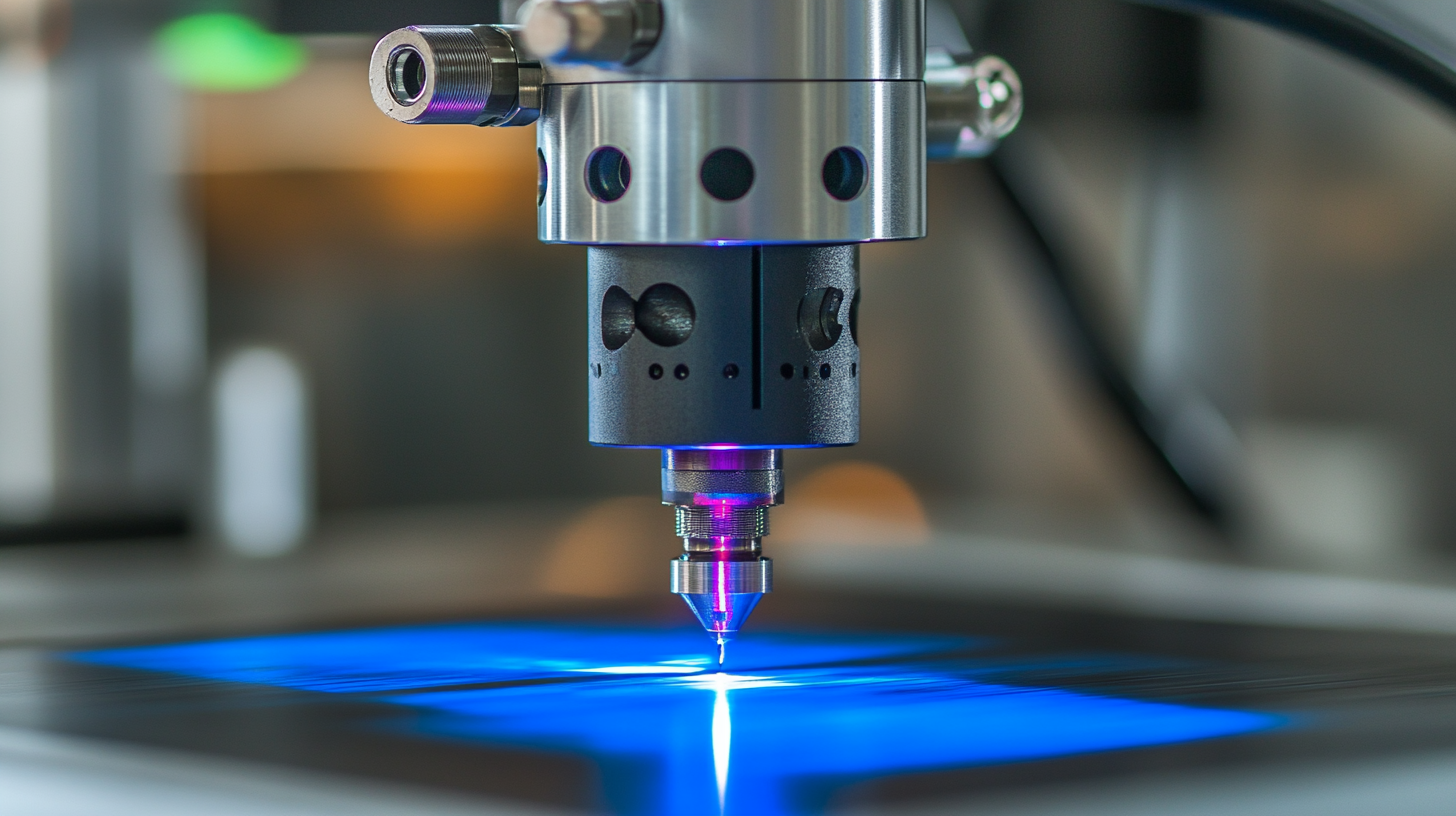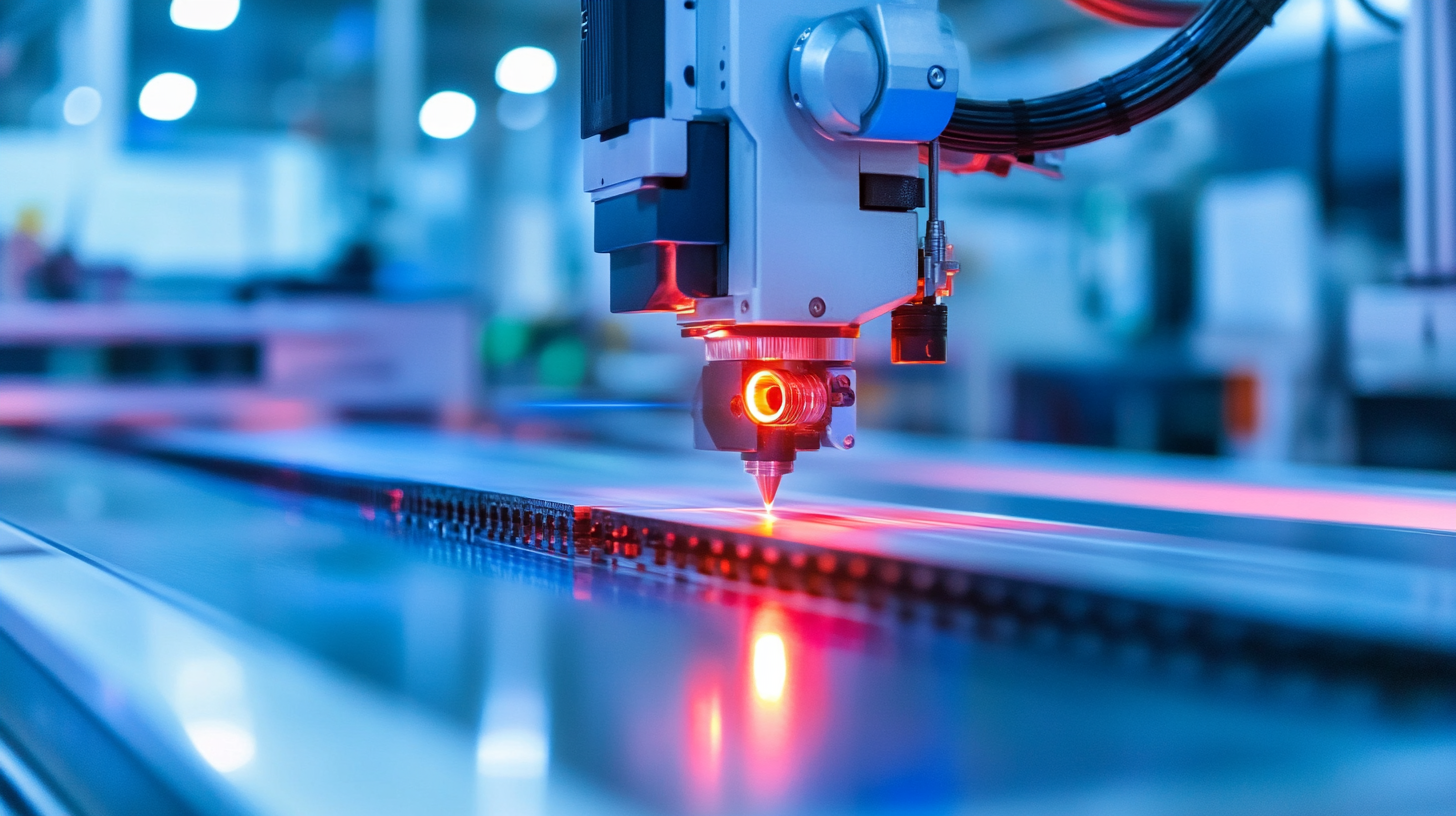
Future Trends in Nameplate Marking Machines Market Analysis for 2025
As the manufacturing landscape continues to evolve, the demand for precision and customization is driving significant advancements in the Nameplate Marking Machine market. According to a recent report by Market Research Future, the global market for marking machines is projected to reach USD 1.8 billion by 2025, growing at a compound annual growth rate (CAGR) of 6.5% from 2020 to 2025. This growth is largely attributed to the increasing need for traceability and identification in various industries, including automotive, electronics, and healthcare. Furthermore, the rise of automation and technological innovations, such as laser marking and rotary engraving, are setting the stage for enhanced efficiency and accuracy in nameplate marking. As we delve deeper into the future trends of this industry, it is essential to explore how these developments will shape the market dynamics and influence the operational strategies of manufacturers in the coming years.

Emerging Technologies Shaping the Nameplate Marking Machines Industry by 2025
The nameplate marking machines industry is poised for significant transformation by 2025, driven primarily by emerging technologies such as automation, laser marking, and digital printing. According to a recent report by MarketsandMarkets, the global market for marking and coding equipment, which includes nameplate marking machines, is expected to grow from $3.2 billion in 2020 to over $5 billion by 2025, reflecting a compound annual growth rate (CAGR) of around 10.5%. The increasing demand for precise and efficient marking solutions in sectors such as automotive, electronics, and pharmaceuticals further fuels this growth.
Automation, particularly in the form of smart manufacturing technologies, is at the forefront of this evolution. These innovations streamline production processes, enhance accuracy, and reduce labor costs. A report from Research and Markets highlights that the adoption of automated nameplate marking machines will increase by approximately 20% in the next two years, as businesses seek to improve operational efficiency and product quality. Furthermore, advancements in laser marking technology offer clear advantages in durability and flexibility, enabling manufacturers to adopt tailored solutions that meet specific branding and regulatory requirements. As we look towards 2025, the intersection of these emerging technologies will undeniably redefine the landscape of the nameplate marking machines industry.
Impact of Global Supply Chain Dynamics on China's Nameplate Production
As the global supply chain continues to experience shifts due to geopolitical tensions and changing trade policies, China's nameplate production is undergoing significant transformations. In 2025, it's projected that the nameplate marking machines market will see a compound annual growth rate (CAGR) of approximately 5.2%, with China emerging as a crucial player in meeting the rising demands of various industries. According to a recent report by MarketsandMarkets, the increasing focus on automation and the Internet of Things (IoT) is expected to drive the adoption of advanced marking technologies in manufacturing, further solidifying China's position in this sector.
To navigate the complexities of global supply chains, companies should consider diversifying their supplier bases. This strategy can mitigate risks associated with political instability or tariffs, enabling more resilient operations. Furthermore, embracing digital solutions for inventory and logistics management can enhance efficiency and transparency. Implementing these changes will not only help organizations adapt to current market dynamics but also leverage China's capabilities in nameplate production as it continues to innovate and improve its manufacturing processes.
Investing in research and development for marking machines tailored to specific industry needs can also yield competitive advantages. With reports indicating a steady demand from the automotive and electronics sectors, businesses that align their production with market trends will be better positioned for success in the evolving landscape. Adopting agile methodologies and fostering collaboration across supply chains can further enhance adaptability and responsiveness to market fluctuations.
Quality Upgrades in Chinese Manufacturing: Meeting International Standards
In the context of China's manufacturing evolution, the emphasis on "new quality productive forces" is pivotal for the nameplate marking machines market as we approach 2025. The integration of advanced technologies is crucial for fulfilling international quality standards, which is becoming increasingly important as global demands for precision and accuracy escalate. According to industry reports, the Chinese market for nameplate marking machines is projected to grow at a CAGR of over 7% from 2023 to 2025, driven largely by enhanced manufacturing techniques and a stronger focus on automation.
As China shifts its industrial landscape, there is a marked increase in the adoption of cutting-edge technologies such as AI and IoT in manufacturing processes. Data suggests that over 60% of manufacturers are prioritizing quality upgrades to align with international benchmarks. This transition is not merely about meeting standards but also about positioning Chinese products competitively in the global marketplace. With the government's support for innovation and a clear path toward sustainable practices, the quality upgrades in manufacturing hold the potential to make China a formidable player in the industrial domain by 2025, impacting the landscape of nameplate marking machines significantly.

Market Shifts: How Consumer Preferences Influence Nameplate Marking Trends
As consumer preferences evolve, the nameplate marking machines market is witnessing significant transformations. Recent studies highlight that customization and personalization are paramount for modern consumers, driving industries to adopt innovative marking techniques that align with individual tastes. According to industry insights, the demand for personalized products is expected to grow at a rate of 10% annually, reflecting a shift towards more bespoke manufacturing solutions. This trend pressures manufacturers to invest in advanced marking technologies that offer adaptability and precision.
Moreover, the on-demand manufacturing paradigm is revolutionizing the way products are created and marketed. By leveraging smart supply chain methodologies, companies can efficiently produce items tailored to specific market demands, thereby minimizing inventory surpluses and reducing waste. A report from McKinsey indicates that on-demand production has the potential to diminish overall lead times by up to 50%, making it increasingly plausible for brands to respond swiftly to shifting consumer desires. These factors collectively underscore the significance of understanding consumer behavior in shaping the future strategies of the nameplate marking machines market.

Forecasting Growth: Key Players and Competitive Strategies in 2025
The nameplate marking machines market is poised for significant growth in 2025, driven by advancements in technology and increasing demand across various industries. According to a report by MarketsandMarkets, the global nameplate marking machines market is expected to grow from $660 million in 2020 to $911 million by 2025, at a compound annual growth rate (CAGR) of 6.5%. Key players in the market, such as Trotec Laser, Gravotech, and Epilog Laser, are focusing on innovative and sustainable solutions to enhance their product offerings and increase market share.
Competitive strategies in the nameplate marking machines sector will likely revolve around technological integration and diversification of product lines. Companies are investing in next-generation laser marking technologies to improve precision and reduce operational costs. For instance, a recent study highlighted that laser marking technology, which caters to diverse materials, is expected to dominate the market, accounting for approximately 45% of the total market share by 2025. Additionally, strategic partnerships and collaborations with other manufacturers and technological firms are becoming increasingly common as companies aim to expand their reach and improve their competitive positioning.
